Social conflicts and environmental disasters in novels, songs and movies
How literature, music and cinema have denounced natural disasters and abuses on the population in the name of economic interests and progress?
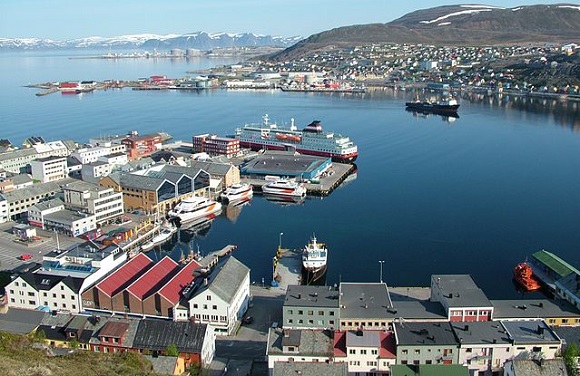
The socially most critical crime novels can sometimes be a good help to understand the background of economic and environmental conflicts in countries from which we do not have much information. A good example is The Wolf Strait, by Olivier Truc (ed. Destino; Truc is also the author of a very rewarding book that I have not read, Le dernier lapon, published in English as Forty days without a shadow). The plot takes place in Norwegian Lapland, around Hammerfest, near the North Cape, a city that has been the basis for Norwegian projects for the exploitation of fossil fuel resources in the Barents Sea and in the Arctic for years.
In 2011, Norway and Russia signed a treatise to distribute those waters but the discovery of oil and gas resources was made in the 1980s by divers working in very dangerous conditions, that later were replaced by small submarine robots. Drilling has only recently begun due to technical difficulties and the low price of oil, with little results so far and some frustration, but the expectations are still very large and industrial facilities are being made, spurred by climate change and the ice decrease. In 2015, the Norwegian government gave the first oil licenses concessions in the area, a decision that contradicts the agreements signed by the Scandinavian country at Paris and that has been brought to court by Greenpeace. The first well was drilled more than 400 km far from the coast. The trial began last November in Oslo. This year, it is expected that many wells will be drilled at Barents Sea. In addition, there are pressures to extract oil from the Lofoten Islands, that are important natural reserves.
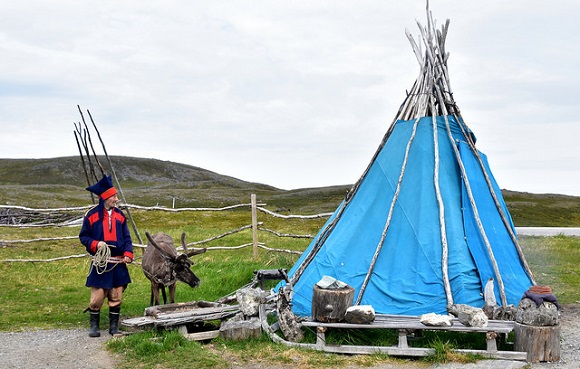
The demands of space for industries and the growth of the urban population in Hammerfest affect the Sami (Lapps), a part of whom are still dedicated to the transhumant reindeer herding, since industry want to alter the traditional routes and pastures of this activity. Needless to say, the Sami and their culture and beliefs are weak compared to the oil companies and the Norwegian political and economic powers see them as a burden for the economic and social progress. This comes from far: the Norwegian state, in the early twentieth century, forced the Sami to send their children to schools where only Norwegian was spoken and did everything possible to end with the Sami identity (there are still several Sami languages, the most spoken is for about 30,000 people). A song that we know well the tune here. The Sami are divided into four states (Norway, Sweden, Finland and Russia).
The Truc’s crime story is not relevant here, but the scenario is fascinating. However, this is just one of the many examples in which a way of living is doomed to extinction as a result of the intrusion of foreign interests. In the Arctic itself, the precedents are painful. Canada wanted to occupy the Cornwallis and Ellesmere islands before the Russians did it during the Cold War and deported, with false promises, populations of Inuits from Quebec who had to adapt to very extreme conditions and learn how to hunt beluga to survive, after to have been practically abandoned. Both the Norwegian and Canadian governments have recognized wrongdoings against Sami and Inuits, but they have made not much to support them.
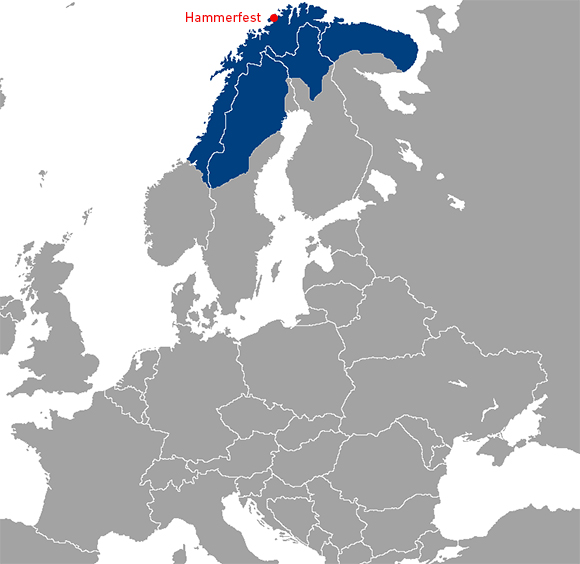
Let me change now the stage. Many westerns have explained the struggles between ranchers and farmers, including some of the best films in history, such as The Man Who Killed Liberty Valance, by John Ford (1962), with a prodigious synthesis of the small story of some characters and the great history of a territory, or The sea of grass by Elia Kazan (1949). Often, farmers who fight against ranchers are presented as poor heroes trying to make a future for themselves and their families, but agriculture means a much more profound change in the environment than extensive livestock farming. The Uruguayan singer-songwriter Daniel Viglietti, who died last October, made his song A desalambrar famous, as a revolutionary claim “land for the peasants” in front of the cattle ranching latifundia:
A desalambrar, a desalambrar! que la tierra es nuestra, es tuya y de aquel, de Pedro y María, de Juan y José…
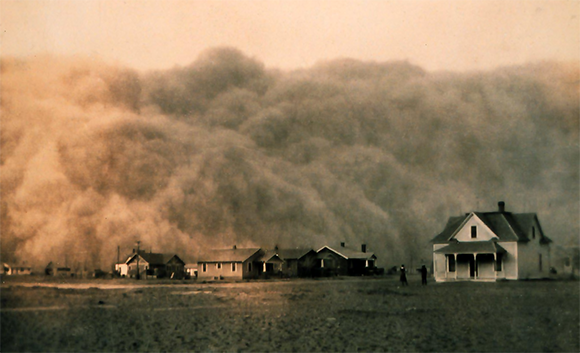
But the cultivation of the grasslands has often had adverse environmental consequences. Perhaps the best known case is that of the Dust Bowl: In the years 1932-39, there was a long drought in the central and northern areas of the Great Plains of the United States, which had been carved during the 1920s and planted with wheat. Wheat did not grow due to the lack of water and the soil was left unprotected, which had a retroactive effect on the drought and, on the other hand, the dust in suspension contributed to create conditions that favored the formation of wind storms. It is estimated that during the Dust Bowl 369 million tons of dust per year were injected into the atmosphere and dragged across the continent (black winds), causing a huge loss of soil (in some places, more than 25 cm of soil disappeared in hours).
As a result of erosion and lack of production, three million indebted farmers lost their land and homes, which passed to the banks. This is related at the beginning of The Grapes of Wrath, the great novel by John Steinbeck (1939) filmed also by John Ford (1940), which tells the story of some families between the half a million people (called okies because many were from Oklahoma) that migrated to the west, to California. The singer-songwriter Woody Guthrie published in 1940 the album Dust Bowl Ballads. Guthrie was an oki who lived the events in the first person. The first song, The Great Dust Storm (Dust Storm Disaster) begins like this:
On the 14th day of April of 1935 there struck the worst of dust storms that ever filled the sky You could see that dust storm comin', the cloud looked deathlike black And through our mighty nation, it left a dreadful track
And finishes:
It covered up our fences, it covered up our barns It covered up our tractors in this wild and dusty storm We loaded our jalopies and piled our families in We rattled down that highway to never come back again
Today, in China, replacing natural grasslands with crops in Inner Mongolia, where losses are estimated at 2 million ha per year, causes huge dust storms with serious public health effects in large urban areas.
The general belief in North America before the Dust Bowl was that the cultivated land attracted rain. The same had defended the Spanish colonizers to stimulate the agrarian exploitation of Patagonia, more than a century before. In both cases, the non-farmers indigenous were considered savages without law or any rights and expelled or eliminated, or their lands were bought in exchange for promises that were not respected or that were mere deceptions. "Progress" was the excuse to expel them.

In the United States, the slaughter of buffalos was the way to destroy the way of life of the Indians: although treatises were signed with them to preserve their right to hunt, whites killed millions of buffalos: about 25 million only in the biennium 1872-73, in which some 7 million bison tongues were exported to the east (then a fashion in restaurants; the following year, Comanches were defeated, deported and part of them imprisoned in Florida). Cows and sheep replaced buffalos. Then the plows arrived and, finally, during the Great Depression that began in 1929, the Dust Bowl occurred, affecting about 400,000 km2. The introduction of new crop practices, with rotations and the use of legumes, changed the situation and agriculture was re-established at the end of the 1930s.
In short, the displacement of populations due to the implementation of new activities (agricultural, industrial, urban) and environmental conflicts are very often related, since the ways of living are profoundly transformed and new uses ignore the old knowledge about the local environment.
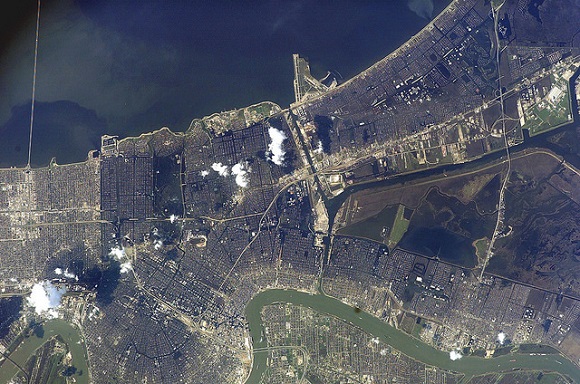
To finish, I would like to mention another crime novel, The Hurricane, by James Lee Burke. You will find in it a very good description of the devastation caused by Katrina in New Orleans in 2005, when the swell caused the breaking of the levees and the flooding of 80% of the city. Burke says that the islands that protected the Louisiana coast were eroded or turned into slate and sold for parking, and that the petrochemicals had dredged 15,000 km2 of channels in the bayou (wetlands), allowing salt water to penetrate the freshwater marshes. The containment dikes parallel to the Mississippi prevented the accumulation of sediment in the west, near the coast, and the marshes disappeared at a rate of 122 km2 each year. That is to say that not everything was Katrina’ fault, there was a disastrous land management and also a very bad one during the catastrophe that, of course, affected especially the poor neighborhoods.
What I have commented here are only examples and there is scientific literature with better foundation. However, I think that of the many contributions of the fiction literature, the cinema and the songs to denounce the speculative maneuvers that have conditioned some of the great social and environmental tragedies of history merit a rigorous study. It would give a good subject for some theses.







